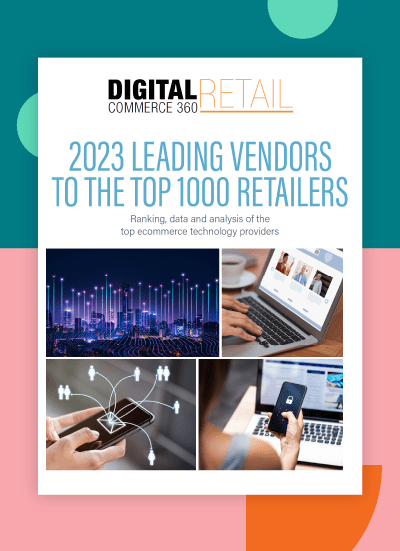
12 Hyper Personalization Statistics That Demonstrate Value
It’s no secret that hyper personalization creates better digital experiences that drive better business outcomes. That includes more consumer interactions, more sales, and more revenue. McKinsey sang its praises way back in 2020, where they dubbed it “the new proving ground of customer care.” And today’s hyper personalization statistics only support its success as a strategy.
Companies that successfully create hyper personalized experiences are giving consumers what they want — tailored shopping experiences that help them feel seen and known by the businesses they buy from.
Ironically, what makes this possible is the largely inhuman process of combining big data with automation, artificial intelligence, and machine learning. This requires a lot of back-end machinery in the form of a powerful hyper personalization platform (we’ll get to that in a minute).
Understanding the growing trend of hyper personalization and what it means for business performance can help you plan a strategy that embraces it.

What is hyper personalization?
Hyper personalization is a type of personalization that uses first-party data, machine learning, and AI-driven algorithms to create individualized experiences for customers. Experiences, in this context, means personalized content (e.g., suggested products, website messaging, customized offers, etc.)
But hyper personalization goes beyond delivering the right content to the right person. It also does this at the right time and on the right platform and in the right context.
Why is hyper personalization important?
Personalization, as a marketing strategy, is important because it aligns with what consumers want from their digital interactions with brand—namely, relevancy. Hyper personalization delivers this in droves. If you want some statistical reassurance that this is the case, here you go:
- McKinsey says that over 70% of consumers expect personalization and will get annoyed when it doesn’t manifest.
- Nielsen reports that 86% of shoppers purchase goods in-store and online, necessitating the need for personalized experiences across platforms and touchpoints.
- In Twilio’s most recent State of Personalization report, 56% of 5000 consumers surveyed said they a personalized experience would motivate them to become repeat buyers (a 7% increase versus 2022).
12 hyper personalization statistics that prove its value
Hyper personalization delivers the kind of interactions that consumers crave – and when it’s implemented correctly, it works really well. Here are 12 hyper personalization statistics that demonstrate the effectiveness of it as a strategy.
How Hyper Personalization Impacts Revenue Growth
#1: It lifts revenue by 10-15% on average, with company-specific revenue ranging from 5-25%. (McKinsey)
#2: 77% of companies that personalize B2B experiences report increased market share. (McKinsey)
#3: Lowes increased their Q1 2023 website sales by 6% even though website traffic declined. Among top competitors like Home Depot and Ikea, Lowes was the only merchant that achieved this lift. They credited investments in upgrading legacy systems to enable better customer experiences, including personalization across channels.
How Hyper Personalization Impacts Customer Retention
#4: Nearly three-quarters of consumers won’t buy from you without personalization. (Accenture)
#5: You risk losing customer loyalty if you deliver a generic experience, with 62% of consumers saying they won’t remain loyal after an un-personalized encounter.
#6: People want to hear from brands, but 58% say they get frustrated with messaging that’s generic or inconsistent. (MoEngage Research)
How Hyper Personalization Drives Customer Acquisition
#7: Personalization can lower acquisition costs by as much as 50%. (Adweek)
#8: Personalization was a top trend among digital marketing decision makers in 2022 who cited it as a top driver of conversions, peer recommendations, and engagement. (ROI Revolution)
#9: Personalized marketing increases conversions, according to nearly 50% of brands surveyed by eMarketer.
How Hyper Personalization Software Improves ROI
#10: On average, personalization boosts companies’ growth rates by 6-10%. (BCG)
#11: Overall, it improves marketing efficiency, sales, and loyalty all of which contribute to ROI when investing in a personalization tool. (BCG)
#12: Almost all marketers report improved business outcomes as a direct result of personalization.
Choosing the Right Hyper Personalization Software
There are some key features you need from a personalization platform to achieve effective hyper personalization. These include:
- AI & machine learning: Ensures the experiences you create are truly hyper personalized and relevant to each customer while being scalable (this is important for large enterprises with thousands or tens of thousands of customers).
- Real-time testing: A/B, multivariate, and dynamic testing helps you find the right combination of messaging, creative elements, and timing. It automates the process of comparing different variations and uses data to determine the most effective one.
- Integrations & APIs: A good personalization platform should easily integrate – or support the APIs – that connect with other systems such as eCommerce, point-of sale, marketing automation, email marketing, analytics tools, and every other part of your tech stack.
- Behavior-driven personalization: The ability to create layers of adaptive recommendations based on first-party customer data combined with behavioral data helps ensure every user experience is unique and tailored to them.
- Segmentation and targeting: The more granular your segmentation, the better. A personalization platform should be able to target customers with hyper personalized content based on demographics, behavior, journey stage, and other factors that help inform their individual engagement strategies.
- Customer data management: You need a platform that can effectively manage customer data across all your digital properties (e.g., access, analyze, and make use of data in real-time.)
It’s important to evaluate the scalability and integration capabilities of different personalization software solutions so you choose a vendor that effectively integrates with your existing systems, but is also flexible enough to grow with you. Scalable solutions help you avoid the need to switch providers as your company grows.
Monetate is once again ranked as the #1 personalization provider in Digital Commerce 360’s Top 1000 annual ranking of the top eCommerce technology vendors for 2023.

As you move through the buying and research process, we recommend conducting a cost/benefit analysis to set expectations and better understand how personalization can help you recoup and deliver on your investment over time.
How Hyper Personalization Drives Growth
At this point, consumers are so used to personalization that it’s become interchangeable with the term “good customer experience.” Investing in the right automated hyper personalization software allows you to meet and exceed your customers’ expectations and build the kind of experiences that motivate customers to buy from you, recommend you to their friends and peers, and stick around longer.
The power of a comprehensive hyper personalization platform is that it uses technology to humanize the digital customer experience. It fuels interactions that customers appreciate and respond to, while giving you insights about your customers that allow you to continually optimize the customer journey for each person.
